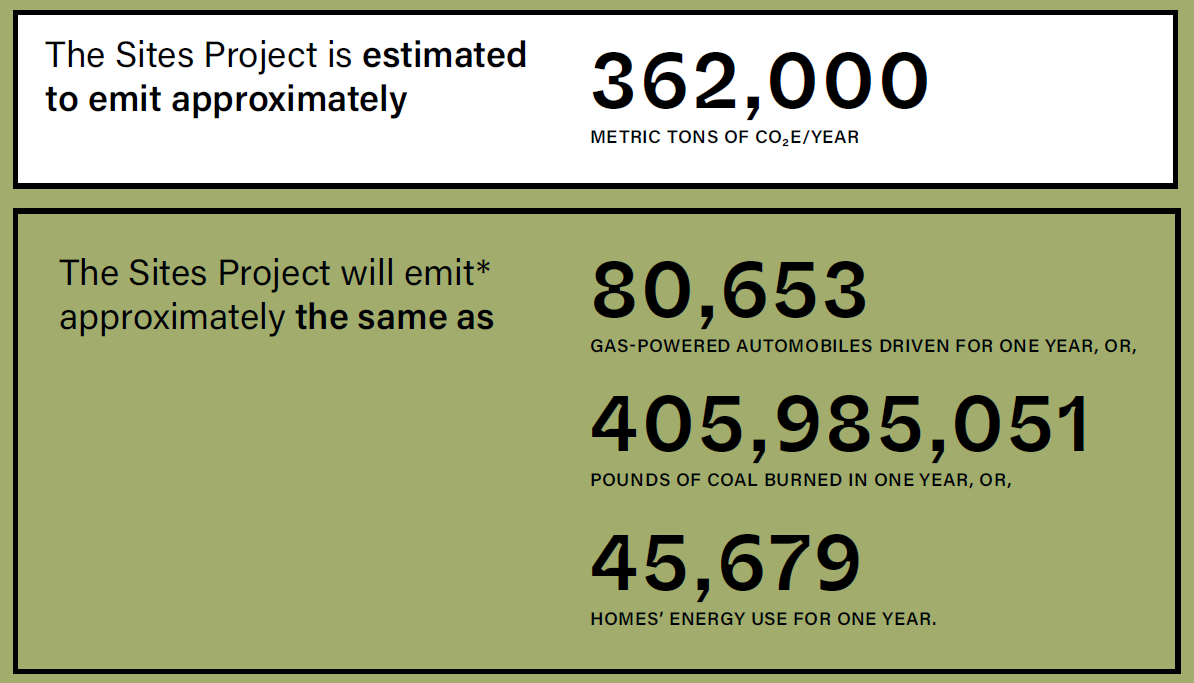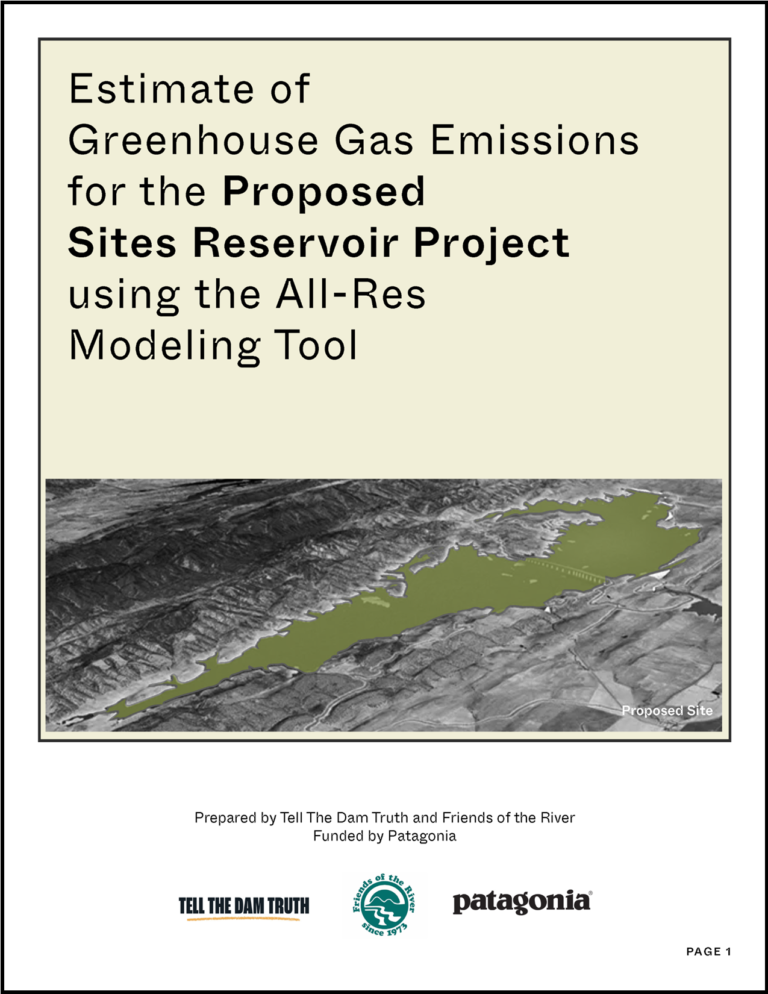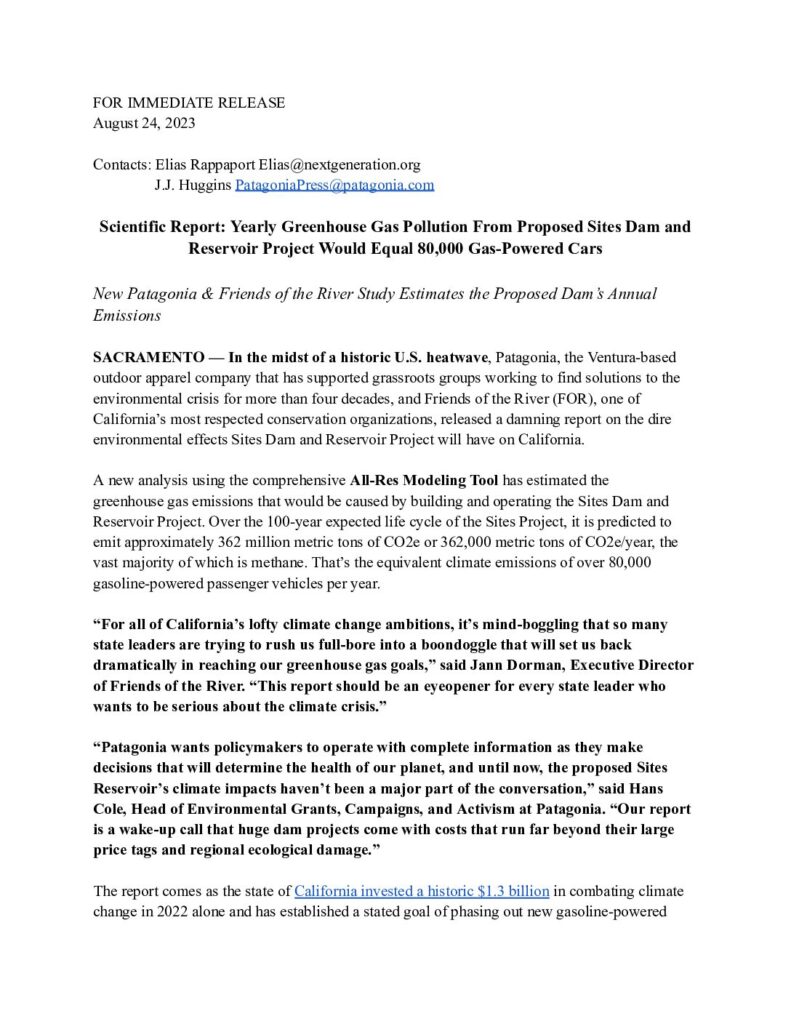Executive Summary:
The Proposed Sites Reservoir project in northern California would divert water out of the Sacramento River to fill a 1.5 million acre-foot reservoir to serve as municipal water supply for agencies in northern and southern California. The project has generated both support and opposition, as well as controversy.
At the same time, knowledge and science about the environmental impacts of dams and reservoirs has increased significantly in the U.S. and across the planet, with a focus on the greenhouse gas (GHG) emissions caused by dams and reservoirs, especially methane.
In this report, we apply a newly developed tool, “All-Res”, to estimate the life cycle GHG emissions from the Sites Reservoir project. The All-Res modeling tool is an advancement over existing modeling tools used to estimate GHG emissions from reservoir systems because All-Res includes all of the cradle-to-grave greenhouse gas emission source categories documented in peer-reviewed scientific literature attributable to dam and reservoir systems including hydropower facilities.
Further, the EPA requires large facilities to report if their emissions exceed 25,000 metric tons of CO2e/year.

Further yet, the most significant GHG emitted by the Sites Reservoir (and all reservoirs) is methane, a potent contributor to short-term climate change targeted by both the State of California and the U.S. Government as needing to be mitigated and decreased.
We strongly encourage decision-makers and public agencies to consider the GHG emissions caused by the proposed Sites Reservoir project in any ongoing or future permitting and funding decisions.

Read more about the Sites Reservoir boondoggle HERE.


